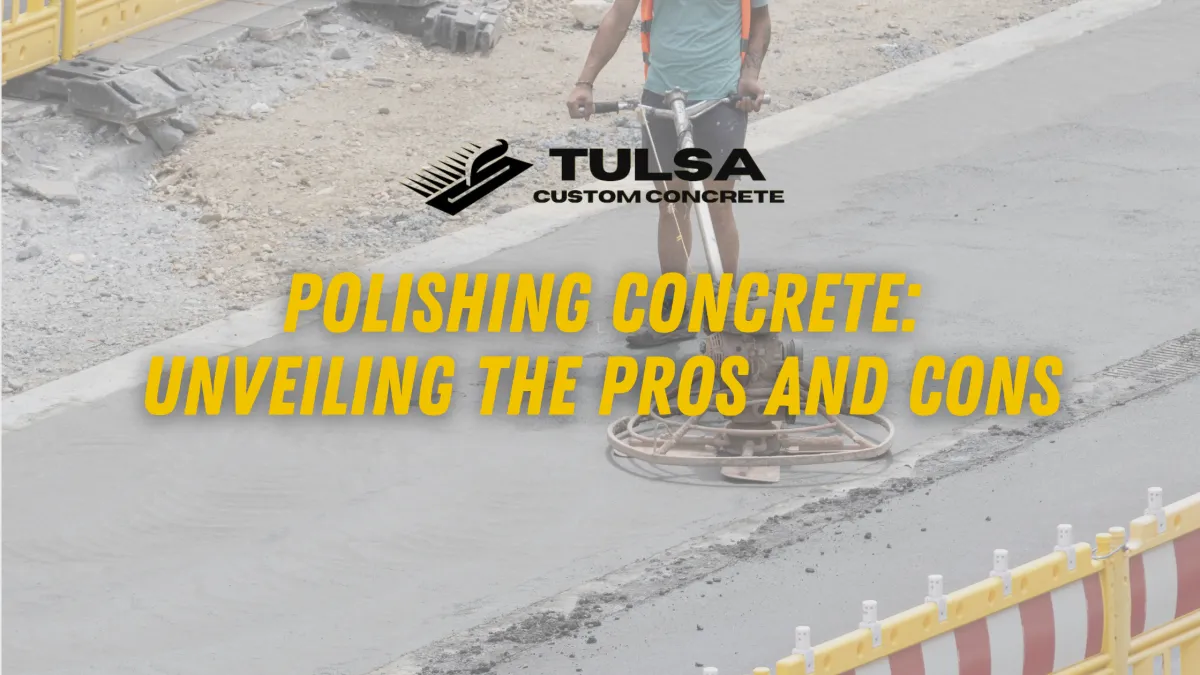918 409 1587

Blog

Polishing Concrete: Unveiling the Pros and Cons
Concrete has long been a popular choice for flooring in various settings, from industrial warehouses to modern homes. One debate that often arises in concrete flooring is whether or not to polish it. Polished concrete floors have gained popularity for their aesthetic appeal and durability, but is the process suitable for every situation? In this blog post, we'll explore why one might choose to polish concrete, as well as the potential drawbacks of this treatment.

Pros of Polishing Concrete:
Aesthetic Appeal: Polished concrete floors have a sleek and modern appearance, reflecting light and creating a polished, high-end look. This aesthetic appeal is especially desirable in contemporary interior design.
Durability: Polished concrete is incredibly durable and resistant to wear and tear. It can withstand heavy foot traffic, making it popular for commercial spaces and high-traffic areas.
Low Maintenance: Polished concrete floors are relatively low maintenance compared to other flooring options. They are easy to clean, requiring only regular sweeping and occasional damp mopping. The smooth surface also makes it resistant to stains.
Cost-Effective: Compared to other flooring options, polishing existing concrete can be cost-effective. It eliminates the need for additional flooring materials, reducing material and installation costs.
Environmental Benefits: Polishing existing concrete reduces the need for additional materials, making it an environmentally friendly option. It also eliminates the need for chemical sealers and coatings, reducing environmental impact.
Cons of Polishing Concrete:
Initial Cost: While polishing existing concrete can be cost-effective, the initial investment for the equipment and expertise required for the process can be higher than other flooring options.
Limited Design Options: While polished concrete is appreciated for its minimalist and modern look, it may not suit every design aesthetic. Some individuals may find it limiting in terms of design options compared to other flooring materials.
Cold Surface: Polished concrete can feel cold underfoot, which may not be ideal for those in colder climates. Adding rugs or using radiant heating systems can mitigate this issue.
Slippery When Wet: Polished concrete floors can become slippery when wet, posing a potential safety hazard. Taking precautions, such as adding anti-slip coatings, is crucial in areas prone to spills or moisture.
Noise Amplification: In large, open spaces, polished concrete may amplify sound, increasing noise levels. This can concern commercial settings or homes with open floor plans.
Deciding whether to polish concrete floors depends on various factors, including aesthetic preferences, budget constraints, and the intended use of the space. While polished concrete offers a durable and visually appealing option, weighing the pros and cons to determine if it aligns with specific needs and considerations is essential. Ultimately, the decision to polish concrete should be made with careful consideration of the unique requirements and preferences of each project.
Quick Links
Services
Latest Feed
© Copyright 2023 |




